For many families, the home is not just the center of daily life and a source of stability, it also represents the family’s biggest asset. That means it is worth protecting! Here are six ways to do so.
1. Estate planning.
Estate planning is essential to preserving value when you own real estate. When an Illinois property owner dies, the real estate passes through probate, unless other arrangements have been made in advance. When doing estate planning, these arrangements are customized to take care of the needs of the family. One common tool is a trust, which can address issues such as the care of young children, how to address split families that resulted from divorce, persons who are not responsible to manage the real estate or money, and any other concerns unique to the family.
2. Disability insurance.
According to the U.S. Social Security Administration, 1 in 4 people will become disabled before reaching retirement age. Disability insurance is a way to offset this risk, and ensure at least adequate income to cover expenses in the event a disability diminishes or eliminates the ability to earn an income. According to the Council for Disability Awareness, the average length of a disability is more than two and a half years. For many people without disability coverage, that is long enough to create a severe financial strain.
3. Life insurance.
Many young families require income from both spouses in order to pay the mortgage and monthly bills and expenses. In the event a covered person should pass, life insurance can prevent the tragedy from compounding into a foreclosure or bankruptcy situation for the survivor. There are multiple kinds of life insurance, which have different features and cost structures.
4. Property insurance.
Homeowners insurance protects the property owner from unexpected costs to recover from damage or destruction of the residence. How much would it cost to replace everything in case the home is destroyed? Consider that you may have to rebuild the entire house: walls, kitchen and bath fixtures, HVAC units, flooring, window treatments, furnishings, personal property, etc. Also consider the amount you will need for loss of use of the home for a period of time, to cover the cost of lodging and meals elsewhere. Policy terms vary widely, however, so it is important to review homeowner policies carefully to verify that they cover all relevant perils adequately.
5. Flood insurance.
A flood is defined as: “A general and temporary condition of partial or complete inundation of 2 or more acres of normally dry land area or of 2 or more properties (at least 1 of which is the policyholder’s property) from: (1) Overflow of inland or tidal waters; (2) Unusual and rapid accumulation or runoff of surface waters from any source; or (3) Mudflow; or (4) Collapse or subsidence of land along the shore of a lake or similar body of water…” In the insurance arena, there are technical differences between terms such as flood, water backup, and rain. Flood insurance is sold separately, and not covered by homeowner policies.
6. Umbrella policy.
An umbrella policy provides additional coverage against liability claims beyond the home or auto policy limits. In the event of an accident or other damage, umbrella coverage may provide a source of recovery to the injured party. If sufficient to compensate for any damages, the umbrella essentially shields the policy owner’s assets from claims by the injured party.


